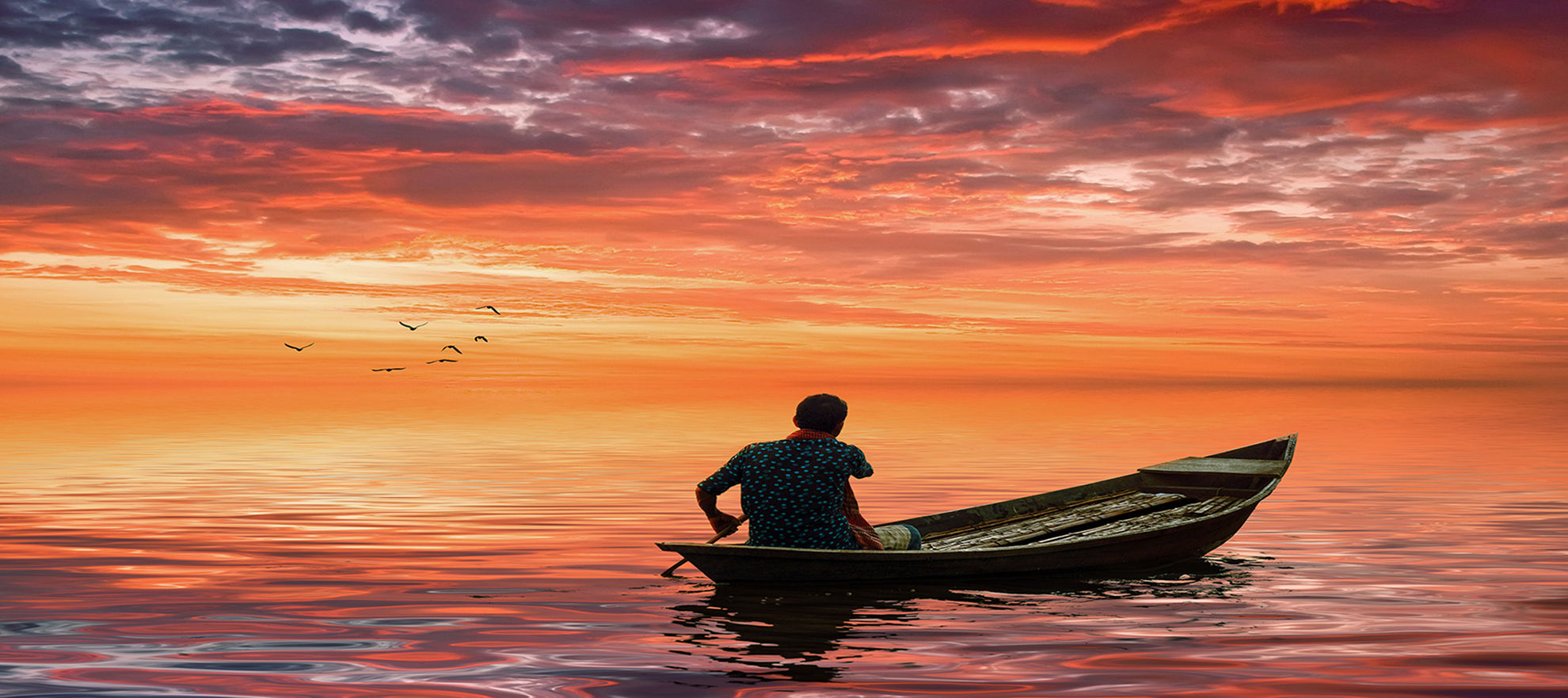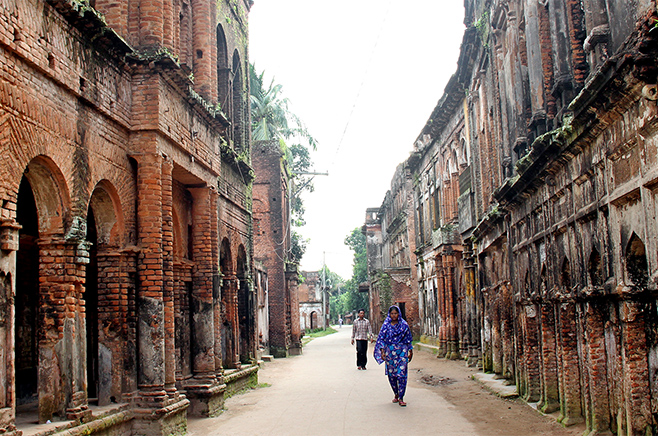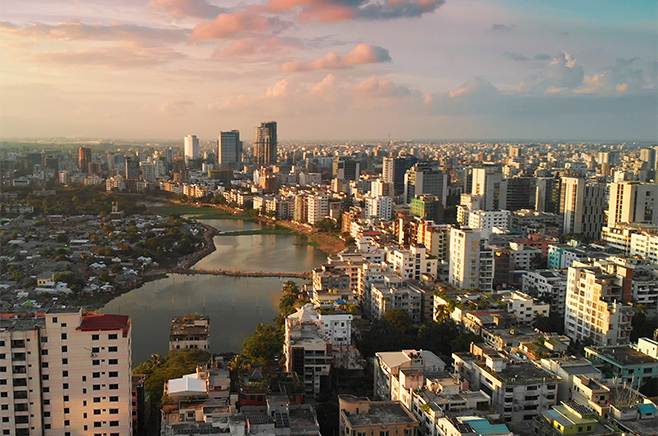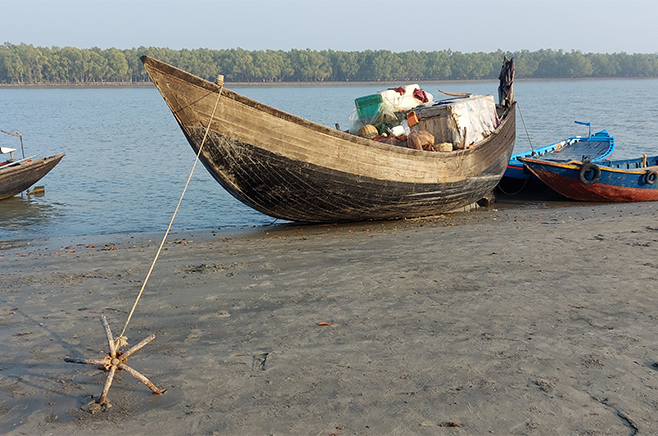
Treasures of the North
- Home /
- Bangladesh /
- Natural Excursions /
- Treasures of the North
North Bengal has been highlighted as the Heritage Highway of Bangladesh. The treasure is overwhelming. Different religion, different races had mingled in this great land and has kept its print, every now and then the treasure is becoming richer with new findings and excavation. The Northern heritages have influences from the Muslims, Buddhist, Hindus and also Christianity. The tribes and their culture in this region is also fascinating, visit the village and their painted mud houses. Experience a different living pattern and exchange views. Explore the people, culture, heritages and learn the simple math of life. You can visit the area round the year, but the foreigner like to visit in winter (October –March).
Itinerary In Detail
-
1: Arrive Dhaka
The guide will welcome you at the outside gate of arrival terminal-2 (left side corner) of Hazrat Shahjalal International Airport, Dhaka and then transfer to your designated hotel. Depending on time, he may offer you to visit following places: Curzon Hall meant to be a town hall, was named after Lord Curzon –a Viceroy of India (1899-1905) who laid its foundation stone in 1904. A
year later Bengal was partitioned and Dhaka became the capital of the newly created province of East Bengal and Assam. After the establishment of Dhaka University in 1921 it become part of the university’s science section and continues as such. Central Shahid Minar –the symbol of sacrifice for mother language. On 21 st February 1952 many students and political activists who were demanding official status for the native tongue “Bengali” were killed by the Pakistani police force. After a long struggle, the language gained official status in Pakistan (with Urdu) in 1956 and the monument was finally established in 1963. UNESCO declared the day as the International Mother Language Day in 1999 and it has been observed throughout the world since 21 st February 2000. The declaration came up in tribute to the Language Movement done by the Bangladeshis and to promote the preservation and protection of all languages used by peoples of the world.
Dhakeswari Temple, built by King Ballal Sen in 12 th century, is the state temple of Bangladesh for Hindu Community. Some people believe the city named “Dhaka” after the temple.
Stay overnight in Dhaka. -
2: Dhaka –Bogura via Tangail (260 km/ approx 8 hrs drive)
After early breakfast, start for Bogura around 0730 hrs. En-route you will visit a Jamindar Palace, ancient mosque, local bazar and Hindu temples in Tangail and Sirajganj.
Mohera Jamindar Palaces was built in 1890 by Kali Charan Saha, is situated 18 km east south of Tangail town. Two brothers Kali Charan Saha and Ananda Saha come from Kolkata and started their jamindari in the early 19 th century in Tangail. Over a large area, they built some residential and official buildings here. There is a huge lake, two ponds, beautiful garden and four lodges in these premises. A magnificent sculpture still stands there as a sign of the time with its great appearance. It is currently being used as a police training centre. Atia Mosque, is a four-domed mosque located in Tangail District on the eastern banks of the Louhajang River, was built in 1609 by Saeed Khan Panni. It is said that the finest of masons and builders were hired by Panni for this job. The mosque suffered damage during an earthquake in the early 19 th century and repaired by different promeinent person of that period. The mosque is still famous for its majesty
and beautiful architectural style. Then drive through the 11 th world’s longest Bangabandhu Bridge to Sirajganj and visit the Hatikumrul Navaratna Temple, built between
1704 -1728 by a revenue officer named Ramnath Bhaduri during the reign of Nawab Murshid Kuli Khan. History teller says that the each brick of this temple washed by pure ghee (homemade liquid butter) before place it. This is a copy of the famous Kantajew Temple, located in Dinajpur, but the largest Navaratna temple in Bangladesh. Local people call it Dol Mancha. Three more small temples are contemporary to main one in the premises.
Then drive continuously to Bogura, transfer to hotel and stay overnight. -
3: Bagura –Dinajpur (180 km/ approx 5 hrs drive)
Morning; visit Gokul Medh, served a Buddhist Shrine or Stupa, built in the terraced cellular style in 7 th century AD. The site was excavated in 1934-36. The site features several terracotta plaques from the late Gupta period as well as a square temple added later in the Sena period. It is also locally known as Behula Lakshindar Basorghor (the bridal chamber of Behula and Lakshinder), protagonists of a popular ballad. Mahasthangarh is one of the earliest urban archaeological sites (3 rd century BC) so far discovered in Bangladesh. From the account of the most prominent Chinese pilgrims Tahien and Hiuen Tsaug mentioned that Lord Buddha with his 500 disciples visited Pundravardhana (presently Mahastangarh) and preached his new Gospel. King Asoka made a stupa on this site where Buddha explained his laws to the Devas. The fortified area was in use until the 18 th century AD. At present there are several mounds and structural vestiges inside the fortifications and some gateways at different points. The excavations have led to the recovery of a large number of items which are present in the Archaeological Museum. [The site as well as the museum closes on Sunday full and 1 st half of Monday.] Afternoon; drive to Dinajpur, check into the hotel for night stay. If time permits, visit Rajbari (Jamindar Palace), one of the oldest palaces in Bangladesh. According to local history, the palace was established by Raja Dinaj or Dinaraj. But other documentation says the estate was founded by King Sri Matta Dutta (1608-1642). A total of 12 kings ruled this estate. The last king of the dynasty was Maharaja Jagadish Nath left the palace in 1951 after the abolished of Jamindar system by East India Company. Since then, the entire structure of the palace has become abandoned and unprotected. Once the palace was a gorgeous one, but its condition is ruinous now due to negligence of the authorities. In spite of that, it still satisfies the thirst of heritage lovers. You can also visit local bazaar and Krishna Temple in the evening.
Stay overnight in Dinajpur. -
4: Dinajpur –Rajshahi via Paharpur (250 km/ approx 7 hrs drive)
Early morning around 0700 hrs, visit the most famous Kantajew Temple, a late-medieval Hindu temple. This spectacular and fabulous terracotta embellishment reflecting the Ramayana and Mahabharata epics has a rare example in the whole of the subcontinent. As per the Sanskrit inscription stone found at the place, Maharaja Prannath started the construction in 1722 CE and completed by his adopted son Raja Ramnath in 1752 CE. Once it had nine spires, but all were destroyed in an earthquake in 1897. Check-out from the hotel and drive to Paharpur and visit the impressive monasteries and the spectacular Buddhist monuments Sompur Vihara –the treasured heritage of the world which has got the huge monastery with 177 monastic cells including with courtyard. This site has been declared as a World Heritage Site by UNESCO in 1985. The excavation has identified the Vihara as built by the second Pala King Dharmapala (circa 781–821). A site museum house with the rich collections of recovered objects, black stone sculptures, images
of gods & goddess of Hindu epics is worth visiting. [The site as well as the museum closes on Sunday full and 1 st half of Monday.] After visiting the world heritage site, you may visit Kusumba Mosque on the way to Rajshahi. The mosque was built in 1558-59 AD during the period of Afghan rule in Bengal under one of the last Suri rulers Ghiyasuddin Bahadur Shah. Although built during Suri rule, it is not influenced at all by the earlier Suri architecture of North India, also well grounded in the Bengal style.
Drive continuous to Rajshahi and stay overnight -
5: Ancient Capital and Painted Village Tour (all around 200 km drive)
Today you will explore a beautiful painted village and the historical site of Gaud. After early breakfast, drive 60 km to Tikoil village which is known as Alpona Gram (painted village). You can see rows and rows of mud-walled houses with colorful paintings as like a different
canvas painted by the village girls with handmade colors of local ingredients. These houses only catch the eye of pedestrian from the exterior to the interior walls. Every year they change the design, draw what they like to enhance the beauty of the house and seek the blessings of the gods as the villagers mostly are Hindus. Then drive 55 km to Gaud which was served as the capital of Bengal and renowned for many ancient mosques, is located in Chapai Nawabganj along the Indian border with Bangladesh, the site extends into both countries. These Islamic architectural wonders were constructed largely during the Sultanate and Mughal period, unfortunately damaged by an earthquake in 1897, but later restored by Bangladesh Archaeology Department.
Chhota Sona Mosque was built during the reign of the Sultan Alauddin Husain Shah in between 1493–1519. Stone carving, brick-setting, and terracotta building once gilded and glazed like gold. The interior with various forms of stylish hanging patterns adapted from the chain
and bell of the Bauddha and Jaina period. Mughal Tahakhana, also known as Shah Shuja Tahakhana, is a three storied building founded by Shah Shuja, a son of the Mughal
Emperor Shahjahan as a temperature control unit, mainly for comfort in winter in the honor of Saint Shah Syed Niamatullah in between 1619–1660 AD. The saint had died in 1080 and buried here. There is no inscriptional evidence of its date; tradition ascribes it to Sultan Shah Suja reported to have built the tomb in his tenure and it was the first Mughal tomb structure in Bangladesh. There are many unknown graves inside the 'Tahakhana Complex' considered as companions of the saint. A short distance away Darasbari Complex is located inside a serene mango orchard. The old and worn red bricked boundary wall what used to be the Madrasa (teaching complex with 40 large rooms and a central courtyard) was built in the early 15 th century during the Mughal reign of Sultan Shah Suja. Further into the mango orchard, another short walk leads to the Darasbari Mosque. According to its inscription(which is now preserved in the Indian Museum in Kolkata), Shamsuddin Abul Muzaffar Yusuf Shah built the mosque in 1479 AD. The walls were ornamented by terracotta plagues and the roof with verandah was covered with 24 domes and 4 chauchala vaults. Khania Dighi Mosque, also called Rajbibi Masjid and Chamchika Masjid, is located on the western bank of Khania Dighi, is not dated by any inscription, but on stylistic ground it has been assigned to the later Ilyash Shahi period around 1480 AD. The whole building was once embellished with terracotta ornamentation.
Drive back to Rajshahi in the evening and stay overnight. -
6: Rajshahi –Dhaka (260 km/ approx 7 hrs drive)
Early morning go for a walk on the bank of Padma River and you may make a country boat cruise to enjoy the morning riverine beauty. Return to hotel for breakfast and check-out. We haven’t done yet the Rajshahi Division, still more things to visit here. Varendra Museum –one of the richest museums in the Sub-continent for black stone statues. The research society and museum were set up in 1910 and it became a part of Rajshahi University in 1964. As it is a part of the university, it closes on all public and university holidays as well as on Friday and Saturday. Then drive 35 km to Puthia known as Temple City. The complex consist a cluster of notable old Hindu temples built by Hindu Landlords of Puthia. The King Palace and the exquisite & unique Dol Mancha are also the parts of the complex.
Then drive back to Dhakna and stay overnight.
-
7: Depart Dhaka
After breakfast, transfer to airport for onward destination.
7 Days From

Any Question?
Feel free to call our travel experts.
+977 9851189018, +977 9801089018
info@asiaticroads.com
7 Days From

Any Question?
Feel free to call our travel experts.
+977 9851189018, +977 9801089018
info@asiaticroads.com
7 Days From

Any Question?
Feel free to call our travel experts.
+977 9851189018, +977 9801089018
info@asiaticroads.com
Reviews
In my 2 week stay, John was very professional and took me around to experience all that Kathmandu and surrounding areas has to offer. Sites were seen and many locals were met through John’s network.

Steven Stone
TravellerIn my 2 week stay, John was very professional and took me around to experience all that Kathmandu and surrounding areas has to offer. Sites were seen and many locals were met through John’s network.

Steven Stone
Traveller7 Days From







